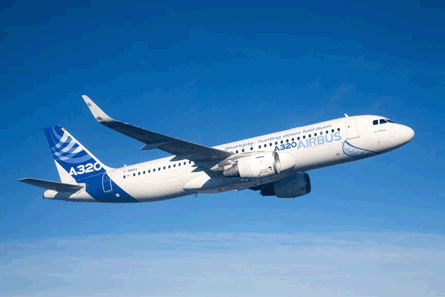Seattle-based Aviation Partners (API), patent-holder of the blended winglet, is seeking the dismissal of an Airbus lawsuit aiming to clarify the intellectual property rights of the European airframer's alleged use of API's winglet on the Airbus A320's sharklets.
Air New Zealand currently serves as launch customer for the sharklets, and anticipates the delivery of its first A320 with winglets later this year.
The implications of the lawsuit filed by Airbus could nullify any royalty claims by API, if Airbus's sharklet design is found to use API's intellectual property.
Airbus and API have worked together since early 2006, court documents claim, when API approached Airbus to determine whether the airframer would be interested in retrofitting Airbus A320s with API's blended winglet.
 |
|---|
| © Airbus Airbus, which carried out the first flight of MSN1 with its sharklet wingtips in late November |
API said Airbus "stated emphatically" that API's blended winglet technology "could not be used" on in-production A320s, or retrofitted to older aircraft.
Following aerodynamic and structural analyses, API and Airbus agreed to flight-test the blended winglet, and in 2009 tasked Airbus's test-bed A320, MSN1, for evaluating the wing-tip modification.
"After this test the parties could not agree as to whether the results met the minimum benchmark performance benefit required by Airbus," the court documents stated, and API went about demonstrating the winglets on a production JetBlue A320.
In the documents filed with the US district court for the western district of Texas, API chief executive Joe Clark said: "API achieved drag reduction far in excess of the minimum benchmark during those tests - and far in excess of the recently announced efficiencies of the 'sharklet'.
"Upon completion of the flight test Airbus acknowledged that the API blended winglets did indeed perform at a superior level."
Airbus claims a 3.5% improvement in fuel burn for the A320 with its sharklets on long sectors.
API said Airbus sought a patent for its own sharklet design, of which outfitting on the A320 was first disclosed in November 2009 at the Dubai air show.
Airbus and API entered into a memorandum of understanding in July 2011, of which the "stated intent" was to form a joint venture to "commercialise" API's blended winglet technology for the A320 family. Also included was the intent to provide wing reinforcement work that would facilitate the engineering and design required to retrofit older Airbuses with blended winglets.
Clark claims that after this work Airbus developed its own sharklet, and the engineers involved with API's work with Airbus filed their own patent.
He also claims that Airbus "did not disclose" to API that it had it filed this application "until after the application became public".
In summer last year, Clark said Airbus provided API data and information about its sharklet design which bore a "striking similarity" to API's blended winglet technology patent.
After terminating its combined involvement with any winglet development plan, Airbus filed a lawsuit in Texas in December seeking to determine that its sharklets do not infringe upon API's blended winglet.
If the case is not dismissed, API has requested its relocation to Seattle.
Airbus, which carried out the first flight of MSN1 with its sharklet wingtips in late November, said it had "nothing to add" to its own legal filing on the matter. The airframer hopes that as well as improving fuel-burn, the modification will increase maximum take-off weight by up to 3 tonnes.
Future wings for the Airbus family will be sharklet-compatible, while the A320neo - due to be introduced in late 2015 - will have sharklets fitted as standard.
Source: Flight International



















